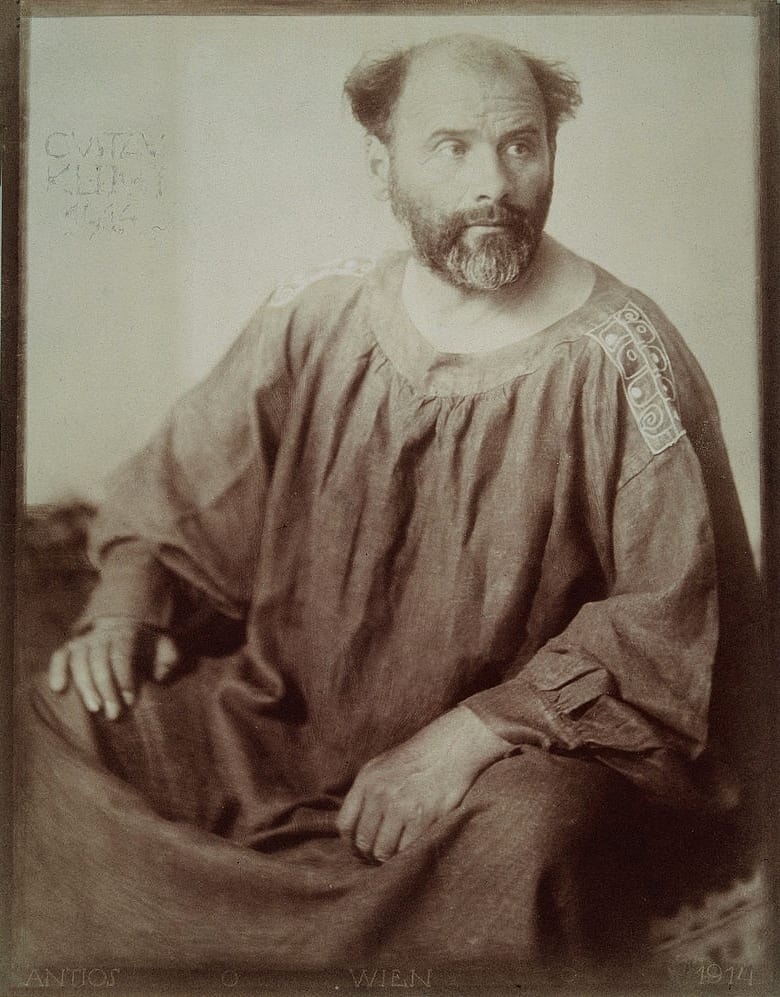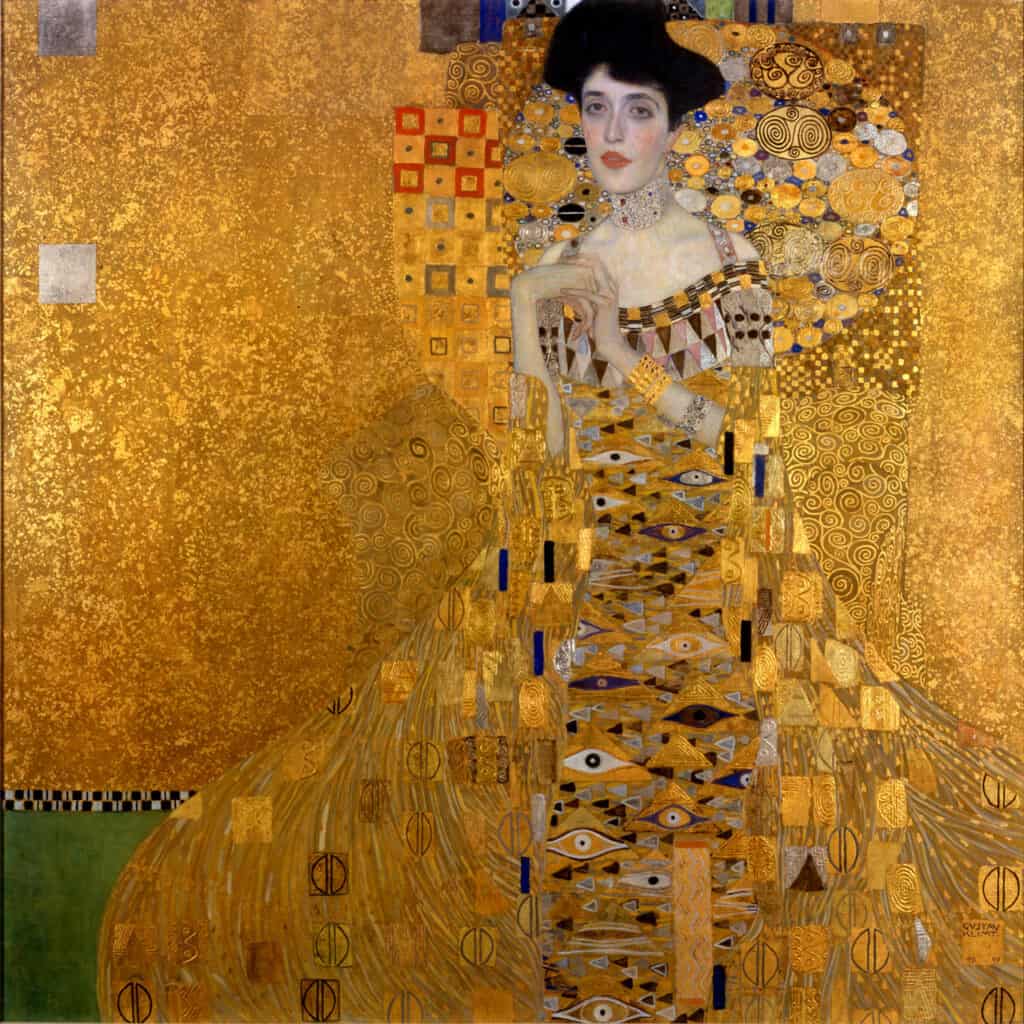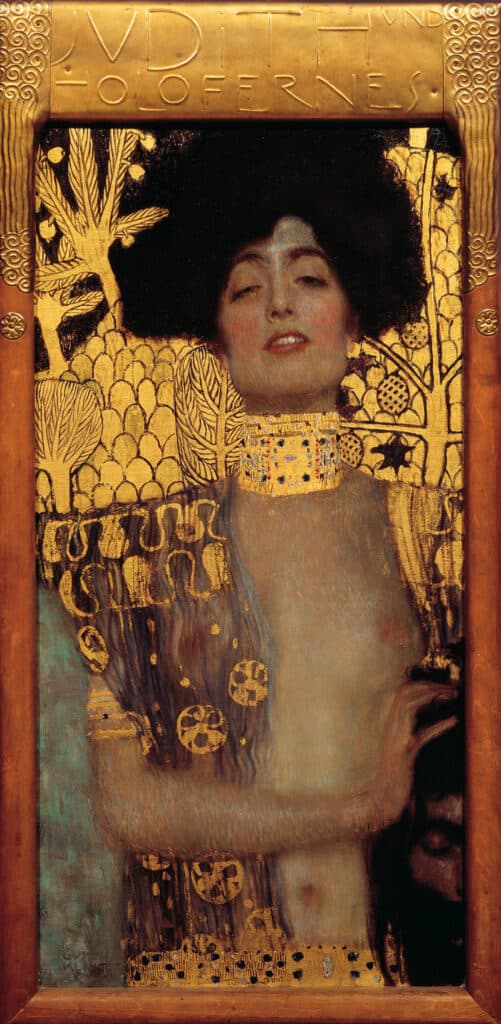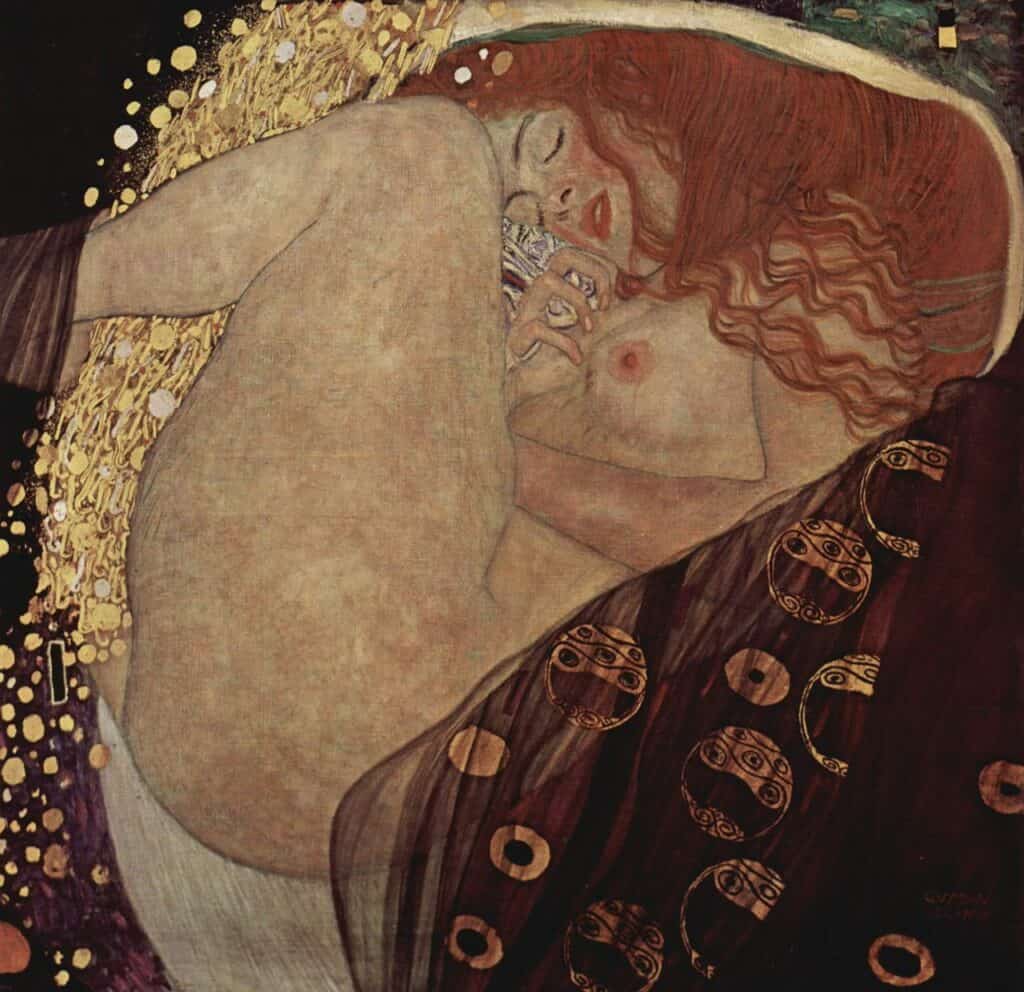Articles and Features
The Life and Paintings of Gustav Klimt
By Shira Wolfe
“I have never painted a self-portrait. I am less interested in myself as a subject for a painting than I am in other people, above all women… There is nothing special about me. I am a painter who paints day after day from morning to night … Whoever wants to know something about me … ought to look carefully at my pictures.”
Gustav Klimt
Who was Gustav Klimt?
Austrian artist Gustav Klimt was the first president of the Vienna Secession art movement, the Vienna-based group influenced by Art Nouveau that included artists, designers, and architects. Klimt was interested in combining beauty and utility, and he is known for his opulent artworks featuring elements of eroticism and sexuality, his primary subject being the female body. He is most famous for his painting The Kiss (1907), which depicts two lovers painted with a rich golden design engaged in a passionate embrace.
The biography of Gustav Klimt
Gustav Klimt was born in 1862 in Baumgarten, near Vienna, the son of the gold engraver Ernst Klimt. From an early age, Klimt showed great talent for the arts, and he was awarded a scholarship in 1876 to attend the Vienna School of Arts and Crafts (Kunstgewerbeschule). He studied there until 1883 and received his training as an architectural painter. The curriculum and teaching methods at the Kunstgewerbeschule were quite traditional, and Klimt never challenged or questioned them. His training included doing studies of the works of Titian and Peter Paul Rubens, while he discovered the works of Diego Velázquez at the Vienna Museum of Fine Arts. He greatly admired Velázquez and the most famous Viennese historical painter of the era, Hans Makart. Makart’s technique, which used dramatic effects of light and a great theatricality, had a significant influence on Klimt.

In 1877, Klimt’s brother Ernst also enrolled in the Kunstgewerbeschule. The brothers and their friend Franz Matsch began working together and opened a studio after finishing their studies. By 1880, they had received several commissions and were involved with painting murals in the Kunsthistorisches Museum in Vienna with one of their professors. They specialised in interior decoration and theatres in particular. In 1886, the painters were asked to decorate the Viennese Burgtheater, which gained them their position as the foremost decorators of Austria. Gustav Klimt’s artworks for this project include the Cart of Thespis, the Altars of Dionysos and Apollo, and the Theater at Taormina.
Over time, Klimt began to develop a more personal style and his work became quite controversial due to its sexual undertones. In 1900, Klimt’s paintings for the ceiling of the Great Hall of the University of Vienna were criticised as being pornographic, and he decided not to accept any more public commissions in the future. However, he achieved acclaim with his masterful use of the gold leaf technique and the paintings that would come to be known as his “golden phase”. Plenty of private commissions followed, allowing him to be selective about whom to work for. Klimt’s art had a big influence on his contemporaries, most notably the younger artist Egon Schiele, who was mentored by Klimt.
In 1897, Klimt became one of the founding members and the president of the Vienna Secession group, which he joined until 1908. The group’s aims were to provide exhibitions for unconventional young artists, to bring foreign artists to Vienna, and to publish their own magazine, Ver Sacrum (‘Sacred Spring’), showcasing the work of the members. It brought together Naturalists, Realists, and Symbolists who wanted to renew the decorative arts and create a “total art” unifying painting, architecture, and decorative arts.
From the 1890s onwards, Klimt spent most of his time with Austrian fashion designer Emilie Louise Flöge, a sister of his sister-in-law, who became one of his favourite models and his companion for the rest of his life as well as one of the most famous muses in art history. Klimt is said to have fathered 14 children, though he kept his romantic life mostly hidden from the public eye. He died in 1918 following a stroke and pneumonia as a result of the worldwide influenza pandemic that year.
“Just as only a lover can reveal to a man what life means to him and develop its innermost significance, I feel the same about these paintings.”
Hermann Bahr
Most famous works by Gustav Klimt

The Kiss (1907)
Gustav Klimt’s most iconic work, The Kiss (1907) shows two lovers engaged in a passionate embrace – it is speculated that the lovers represent Klimt and Emilie Louise Flöge. Irregular patterns compose the entire painting, and the lavish use of gold leaf makes this painting one of the highlights of Klimt’s “golden phase”. Today, the painting hangs in the Österreichische Galerie Belvedere in the Belvedere, Vienna.

Portrait of Adele Bloch-Bauer I (1907)
Portrait of Adele Bloch-Bauer I (1907) is also known as The Lady in Gold or The Woman in Gold. The portrait was commissioned by the model’s husband Ferdinand Bloch-Bauer and is the final work in Klimt’s golden phase as well as the first of the two depictions of Adele Bloch-Bauer by Klimt. Adele passed away in 1925 and stipulated in her will that the portraits Klimt painted of her should be left to the Galerie Belvedere. However, the painting was stolen by the Nazis in 1941, along with other assets of Ferdinand Bloch-Bauer. It was then given to the Galerie Belvedere by a lawyer acting on behalf of the German state. In 1998, a lawsuit against the Galerie Belvedere was started to reclaim artworks stolen from Jewish owners during the war, and the painting was finally returned to one of Ferdinand’s nieces, who sold it to an art collector who then placed it in the New York gallery the Neue Galerie, where it is held to this day.

The Tree of Life, Stoclet Frieze (1909)
The Tree of Life, Stoclet Frieze (1909) is a series of three mosaics created by Klimt for a commissioned work at the Palais Stoclet in Brussels. The panels depict a standing female figure (The Expectation) on the left, the Tree of Life in the middle, and an embracing couple (The Embrace) on the right. Klimt’s cartoons for the mosaic frieze at Stoclet House are currently in the permanent collection of the Museum of Applied Arts in Vienna.

Judith and the Head of Holofernes (1901)
Judith and the Head of Holofernes (1901) depicts the biblical figure Judith holding the head of Holofernes, right after she has beheaded him. Many artists before Klimt had taken it upon themselves to depict this scene, and Klimt’s take on the biblical story concentrates completely on Judith and her brave act. Holofernes’ head is only partially in view in the bottom-right corner of the painting.
Where to find Gustav Klimt’s works
Today, Gustav Klimt’s artworks can be found in important collections around the world, most notably the Museum of Modern Art and the Metropolitan Museum of Art in New York, the Leopold Museum and the Belvedere Museum in Vienna, La Galleria Nazionale in Rome, and the National Gallery in London. Finally, the impressive Secession Building in Vienna still houses Klimt’s Beethoven Frieze, still recognised today as one of the most important artworks of the Secession style.
Relevant sources to learn more
The Most Famous Art Movements and Styles
Gesamtkunstwerk. The Total Work Of Art Through The Ages
For other Art Nouveau artists, see:
Henri de Toulouse-Lautrec
Aubrey Beardsley
Antoni Gaudí
Wondering where to start?



